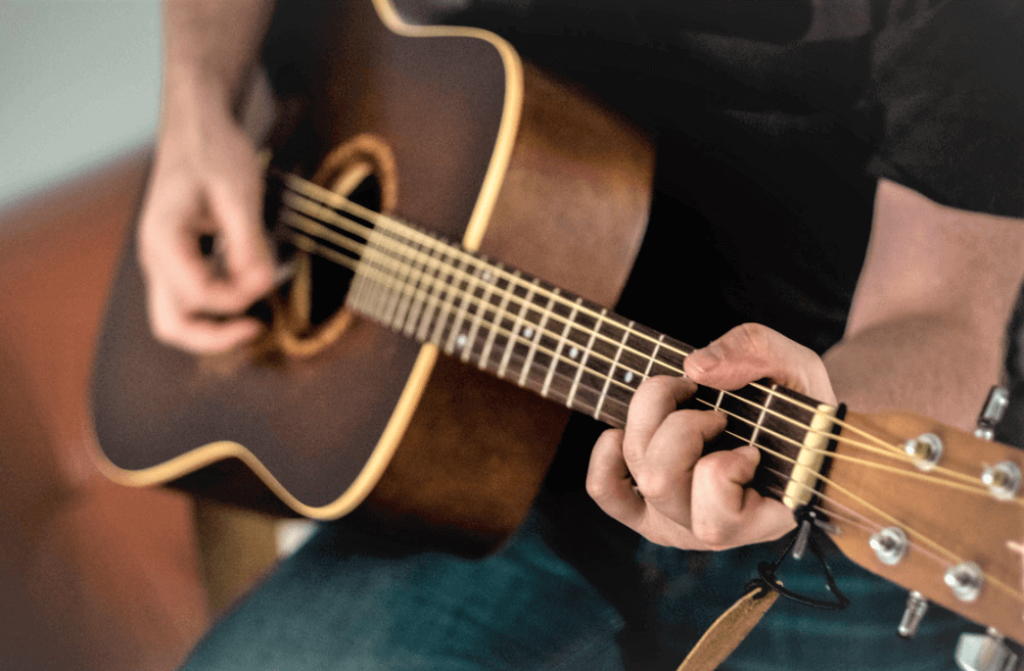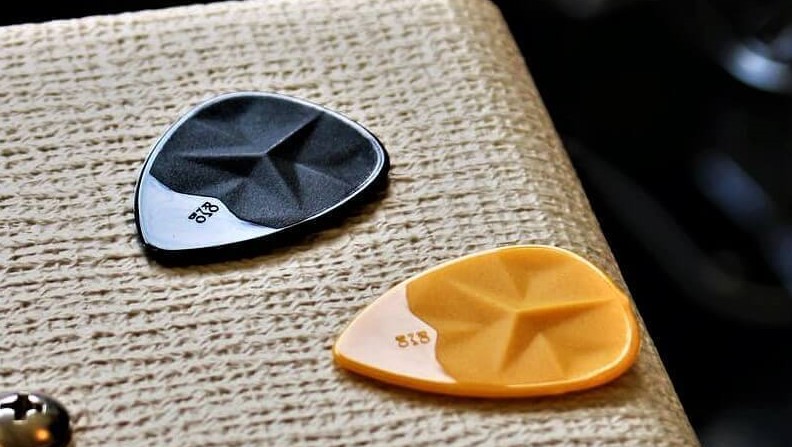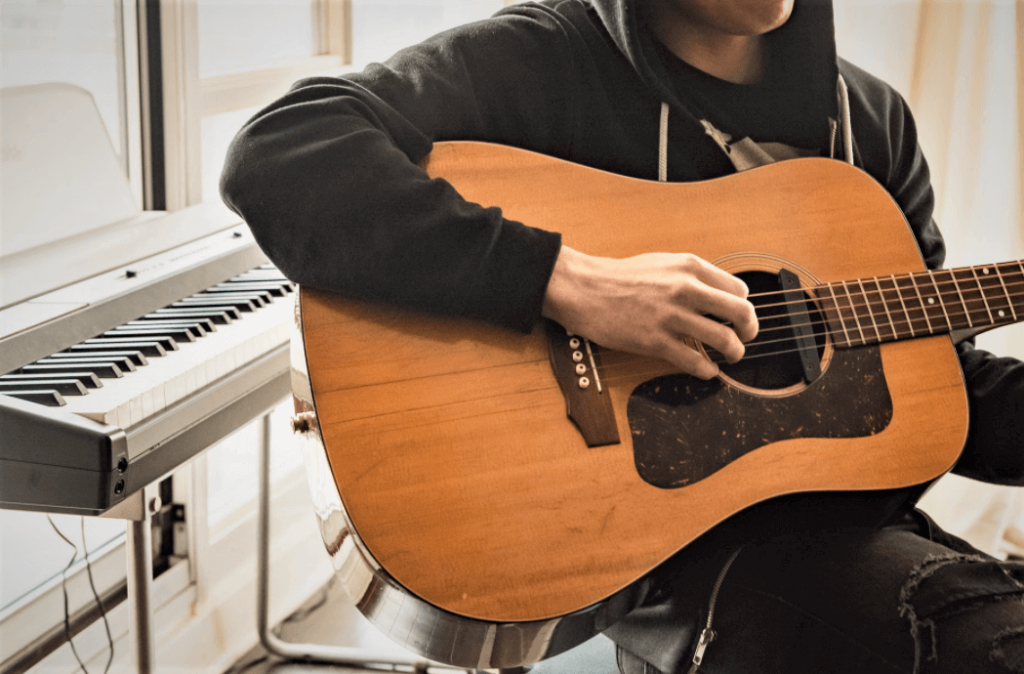Switching from Classical to Acoustic Guitar: 5 Easy Steps
An acoustic guitar is considered one of the versatile musical instruments. If you’re a classical guitarist and want to switch to an acoustic guitar, Here’s the exact step-by-step process one of my classmates goes through.

So, How to Switch from Classical to Acoustic Guitar? To switching from classical guitar to acoustic, one needs to start practicing chords and get familiar with steel strings. While fingerpicking and tuning are almost similar, an acoustic guitar may feel challenging to play and just required some time and practice.
definitely, this is not going to be like you’re learning any instrument from complete scratch, but the acoustic guitar is a new kind of instrument. And if you want to master it, you need to put in the effort from your side.
Stay with me and I’ll will tell you how you can make this process easier for you:
- How to Transition from Classical Guitar to Acoustic Guitar?
- Difference Between Classical Guitar and Acoustic Guitar
- Can I change my Classical Guitar to Acoustic Guitar?
- Are Classical Guitars Smaller than Acoustic Guitars?
- Are Classical Guitar Chords the same as Acoustic Guitar?
- Final Thoughts on Switching from Classical Guitar to Acoustic Guitar
How to Transition from Classical Guitar to Acoustic Guitar?
Here’re my 5 easy steps to switch from classical guitar to acoustic guitar.
Step 1: Get a Nice Acoustic Guitar for you
I know, this is obvious. You need to buy one acoustic guitar for yourself to properly learn the guitar. You may not need to open your pocket more, you can buy a descent acoustic guitar that cost you around $100.
But, If you really on a tight budget, you can go with used guitar from your local guitar shop, although I don’t recommend that. Just cut down your extra expenses, save a little, and go get yourself a nice acoustic guitar.
Step 2: Practice Chords on Steel Strings
As a classical guitarist, you already knew about pretty much all chord shapes. But when you switch to acoustic guitar, things changed!

As the fretboard of an acoustic guitar is a little narrow, there is less distance between strings. Also, now you’re going to play with steel strings which will feel totally different from your fingers.
Start with the basic open chords and go one by one, just like you did when you’re learning classical guitar in the first place.
You might feel sore fingers, you may need to press a little bit more on strings to get the proper sound. believe me, that’s how almost everyone feels in the beginning. Get your fingertips familiar with steel strings and absorb the chord shapes in your muscle memory!
You May Like: Can you Use Nylon strings on Acoustic Guitar? How?
Step 3: Start Strumming with a Pick
Many peoples try to neglect this point and start practicing acoustic guitar with fingers just like they used to do on classical guitar. I am not saying you can’t do fingerstyle on acoustic guitar.
But, It is a good practice to play acoustic guitar with a pick. Nylon strings are very softer as compare to steel strings. If you don’t want to move further with your learning curve, you might end up hurting your fingers.

If you play acoustic guitar with your fingers, not only it will limits your length of practice session but also, you will miss advantages of different picking techniques.
You may feel weird to play with a pick, in the beginning, It may slip out of your hand but once you start getting it, you’ll enjoy playing guitar like never before. Check Out our guide on Holding a Guitar Pick Properly for Beginners.
Step 4: Get Familiar with Different Acoustic Gears
This is an options step and you have a choice whether you want to do this or not. Some acoustic guitars come with in-built electronics, also known as acoustic-electric guitars.
If your guitar has such electronics in it, you need to make a decision. Do you want to learn it just as a normal acoustic guitar or you want to play it with those electronics?
If you want to leverage electronics into your play, first of all, you need to buy some gears like some pedals, one good Amp, and much more according to your need!
Much Read: Do you Really need to buy one Acoustic Guitar Amp?
Start playing with these gears, learn how to use them efficiently, learn how you can enhance your music more with them.
Step 5: Practice is the Key to Learn Acoustic Guitar
Do you remember how much did you practice when you start learning classical guitar? I’m sure a lot! because learning a musical instrument required a lot of practice.

Even though this is not your first instrument, but still you can’t save it from practice. Once you start learning acoustic guitar, you will understand, there are so many things that are going up and down, all at the same time.
You’re dealing with sore fingers, you’re learning how to use a pick properly, you’re adjusting to the new acoustic guitar’s body! Everything will be normal with just practice.
Don’t miss your practice sessions, whether it’s 20 min a day or 2 hours, be consistent with it and you’ll be great!
Difference Between Classical Guitar and Acoustic Guitar
You may already know this, the classical guitar comes with nylon strings whereas the acoustic guitar has steel strings on them. Nylon strings are very soft, thicker, and mellow sounding strings, unlike steel strings which are relatively brighter, twangy, and resonates more.
Of course, they feel totally different, and maybe you also need to deal with sore fingers in the beginning even you’re not a total newbie!
The next difference comes in their body shapes. Classical guitars come with dreadnought shape whereas acoustic guitar is available in both dreadnought and cutaway shapes. (Personally, I like cutaway more, where you can access some higher frets easily!) Also, Classical guitars are relatively smaller in size than acoustic ones.
One more simple difference anyone can notice is the fretboard. The acoustic guitar has a narrow fretboard as compare to the classical one. thus there is less spacing in between strings, which might be overwhelming for you in the beginning.
Also, you will get to see fret markers also know as dots or inlays in acoustic guitar. those dots helps you to understand which fret you’re currently on.
One more key difference between these two types of guitars is, acoustic guitars are a little more expensive than classical guitars. So, if you need a nice acoustic guitar, you might need to open your pocket a little more.
Read this detailed article on Classical Guitar vs Acoustic Guitar.
Can I change my Classical Guitar to Acoustic Guitar?
This is also one interesting question that people often ask. If you think, Classical guitars have nylon strings and acoustic guitars have steel strings on them.
Then, instead of buying a new acoustic guitar, why shouldn’t I just put steel strings on classical guitar to make it acoustic?
If you simply put steel strings on classical guitar, you might end up wreck your guitar due to the high tension. Acoustic guitars have a truss rod inside them to bear the tension of steel strings. Also, you can’t do anything about the wide fretboard and body shape of classical guitar.
So, You can’t change your classical guitar to acoustic guitar. If you really want to learn acoustic guitar, you need to buy one for yourself.
You May Also Like: How to Switch from Classical Guitar to Electric Guitar
Are Classical Guitars Smaller than Acoustic Guitars?
As I already told you, If you visit your local music store, you’ll mostly find classical guitars in dreadnought shape whereas acoustic guitars in both dreadnought and cutaway shape.
Both classical and acoustic guitars are available in various sizes. The concert size acoustic guitars are so bigger than normal classical guitars whereas parlor acoustic guitars actually have a smaller body than most of the classical guitars.
You might hear many peoples saying, classical guitars have a smaller body as compare to the acoustic guitar. That’s true but that’s not a complete picture. I mean you can’t take this statement as a thumb rule.
If sizes of guitars varies, what about the chords? let see:
Are Classical Guitar Chords the same as Acoustic Guitar?
Even though classical and acoustic guitars have many differences in them but classical guitar chords are exactly similar to the acoustic ones. You may feel different as the distance between strings changes, but the basic shapes of the chords remain the same.
As you already learn music chords on classical guitar, you can easily learn them on acoustic guitar, once you set up your hand on it with little practice.
Final Thoughts on Switching from Classical Guitar to Acoustic Guitar
I hope this step-by-step guide will help you to transition from a classical guitar to acoustic guitar. I’m pretty sure, being a classical guitarist, your journey of learning acoustic guitar is going to be awesome.
So, Just enjoy the process, enjoy the music and you’ll be a great acoustic player. If you like this guide, make sure you share it on your social media with your friends and family members.
If you have doubts or any kind of suggestion for me, I’m happy to learn your comments!

![How to Make Your Guitar Sound Warmer Today? [5 Easy Tips] make guitar sound warmer](https://www.scoreguitar.com/wp-content/uploads/2020/12/make-your-guitar-sound-warmer-1-1-1-1-1-1-210x150.png)
